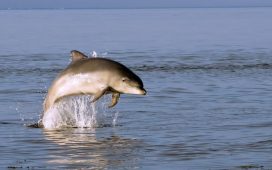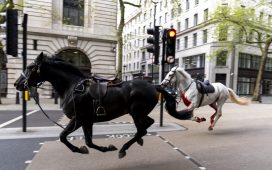Australian wildlife. Koalas, platypus, wallabies. We use them as our emblems, put them on our coins, name our sporting teams after them and companies use them as logos. Echidnas, dingoes, kangaroos. They are part of the fabric of our national identity. And so they should be. Most of them are found nowhere else on Earth. Wombats, numbats, bettongs. This continent is home to an amazing diversity of plants and animals, not to mention the unique landscapes they call home. They make Australia what it is and were here long before humans arrived. Antechinus, quolls, phascogales. But do we actually care about them? Of course we do! But can we honestly say that, if we judge ourselves by our actions? Thylacine, Bramble Cay melomys, Christmas Island pipistrelle.
I recently spent time in the takayna/Tarkine rainforest, one of my favourite places in Australia. If takayna doesn’t ring a bell, you’re not alone. The largest temperate rainforest in the southern hemisphere is not well known. It’s an under-appreciated national treasure in the north-west of Tasmania. That places like this still exist is a wonder. A rich ecosystem, teeming with life, supporting an array of plants and animals that exist nowhere else.
Gazing through the understorey, filtered light dances across an incredible array of greens. Leatherwoods, celery-top pines, sassafras and a host of smaller understorey plants thrive in the dappled light and shadows. Every surface seems to be covered with moss and fungi. These are not confined to the ground, reaching up into the sky along the trunks of giant eucalypts and myrtles. Some yellow-tailed black cockatoos fly through, making a racket as they land above and feed in the canopy. The sound of water trickling through the forest and the distant roar of a waterfall are a backdrop to their calls during the day, giving way to the sounds of Tasmanian devils and the elusive masked owl at night.

I was in takayna last week visiting a group of everyday Australians who have been spending their time trying to save a piece of the rainforest from being logged to make way for a proposed tailings dam. More than 400 people have joined the blockade to stop heavy equipment widening roads into the area. Their nonviolent direct action has led to almost 70 arrests, forcing the federal environment minister, Sussan Ley, to call for a full environmental impact assessment before proceeding – something you and I would probably assume was a prerequisite before razing more than 200ha of ancient forest. The mining company has alternative locations for the tailings dam which don’t require logging old-growth forest. But they seem determined to put it there – home to up to eight threatened species.
Yes, you can already hear the politician or industry spokespeople saying “jobs, jobs, jobs” which is, predictably, what they are saying. And that is often a valid concern, particularly for small towns and regions that were at the forefront of the frontier economy, turning “natural resources” into profit. But this isn’t really about jobs – the alternative locations for the tailings dam mean there would be no impact on jobs for the mine.

Razing nature to the ground was once considered an unavoidable consequence of “progress” – whether it was cutting down old-growth forests for timber, clearing them to make way for mines or, in this case, a toxic waste dump. But we know so much more now – about ecosystems and the web of life, and just how dependent we are on nature. About the climate emergency and the extinction crisis we’re causing. And about the future economy where native forests are worth many times more for their carbon, biodiversity and tourism value than they are when we turn them into wood chips or tailings dams.
Despite knowing all this, across Australia we continue to subsidise cutting down our remaining native forests, spending more than a billion dollars to do so in Tasmania alone. Cutting down ancient trees turns out to no longer be profitable. But rather than transition the industry to plantation timber or reimagine how we use these forests, we now pay for them to be cut down out of the public purse. This kind of thinking means that the destruction of ancient rainforest for a heavy metals waste dump is still very much on the cards. Unless we start to actually care and change course.
Places like takayna are our heritage, they have survived largely as they have been for thousands of years. There is potential for the future in each tree hollow, crystal clear stream and fungus in the forest. An intricate web of life that evolved over millennia and contains some of Australia’s richest Aboriginal history. Takayna is one of the last remaining strongholds of carnivorous marsupials, including the Tasmanian devil and the tiger quoll – the closest remaining relatives of the extinct thylacine, tragically exterminated by humans last century. The devil and quoll are just two of many species now being pushed to the brink of extinction. Unfortunately they are not alone – we have almost 2,000 species at serious risk of extinction in Australia, and can muster only 0.02% of our federal budget to find ways to protect them.

We can’t change the past but we can learn from it and summon the courage to alter course. We have solutions to these problems, we just need the will to make them priorities. Places like takayna allow you to be transported back in time – and perhaps into a future where we value these remaining treasures for what they are. We have an opportunity to reorient our lives back towards nature, reshaping our economy to benefit all Australians – human and non-human. This is no longer utopian thinking, life as we know it and love it depends on this. What could provide more meaning than accepting the challenge of building a society that celebrated and cared for the places it lived in? A society that cherished and cared for its home. I’m in!








